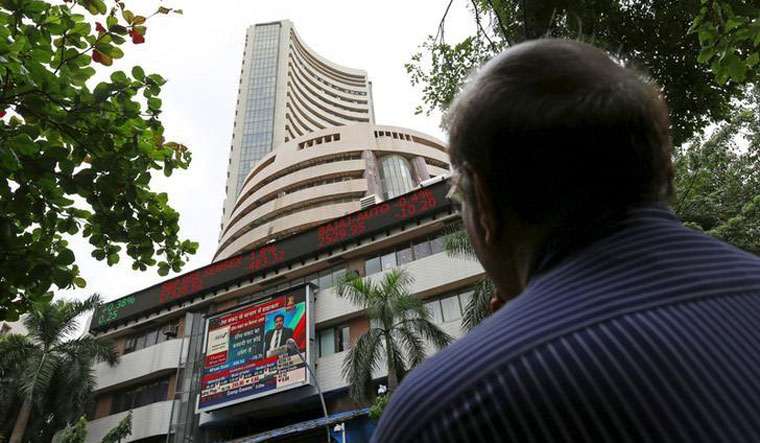India’s economy faced a sharp slowdown in 2019, and the expectations are that it will only pickup gradually. Equity markets seemed to have shrugged off the economic woes, with benchmark indices hitting fresh highs at regular intervals. On January 20, the BSE Sensex touched its all time high of 42,273.87 points. 2020 is expected to be a year when the economy starts to turnaround. But, equity markets will remain volatile with many factors like the Union budget, corporate earnings, geopolitical tensions all playing a part. In this backdrop, equity markets could see some consolidation and a bottoms up approach of focusing on stock selection will extremely crucial, say analysts.
India’s GDP grew at just 4.5 per cent in the September quarter. The International Monetary Fund has forecast India to grow at 4.8 per cent in 2019 and then pickup gradually to 5.8 per cent in 2020 and 6.5 per cent in 2021.
All eyes for now will be on the Union budget, which is around the corner. The expectation is that Finance Minister Nirmala Sitharaman will announce measures that would give consumption and job creation a boost, while taking further steps to aid private sector investment.
“Government’s close monitoring and engagement with market players in order to address the current slowdown in the economy will keep market expectations intact as we move forward,” said A. Balasubramanian, MD and CEO of Aditya Birla Sun Life Asset Management.
“As it happened in the case of Corporate Tax cut, which not only brought India at par with global economies, it also provided much needed sentiment boost to the capital market. In a similar manner, the budget scheduled in February may also give many surprises both in the form of tax cuts, as well as steps to revive the evidence in the economy,” he said.
Driven by a sharp rise in vegetable prices, India’s consumer inflation has shot up to 7.35 per cent. However, a good monsoon and healthy water level in reservoirs is expected to help in a good winter crop, and that should help lower food inflation in coming months, say analysts.
Elsewhere, banks’ balance sheets are improving with several big ticket NPA (non-performing assets) accounts getting resolved and banks getting some of the money back. This coupled with the RBI ensuring ample liquidity in the market could drive banks step up their lending. Even though the Reserve Bank is expected to keep interest rates on hold for now given the surge in inflation, banks are expected to continue reducing their interest rates over time, given that so far only fraction of the 135 basis points Repo Rate cut has been transmitted.
“Given the number of green shoots and the policy actions announced, we believe that the worst is behind us. We will see a cyclical through gradual recovery, and hopeful of a broader market recovery soon,” said Balasubramanian.
Despite the economic challenges, foreign institutional investors pumped in Rs 101,122 crore in India’s equity markets in 2019. They have further invested Rs 8,780 crore in equity so far in January 2020.
Manishi Raychaudhuri, head of equity research for Asia Pacific at BNP Paribas, says Indian equities are one of the rare “compounders” in the Asian universe.
“India’s relatively high long-term earnings growth along with low earnings volatility ensures this. Ease of stock selection and availability of a diverse range of sectors to invest in remain a key bright spot for India. We believe these factors explain why India is almost always a key recipient of large FII flows in any episode of FII flow revival into Asia,” said Raychaudhuri.
Over the last year, though, there has been a sharp polarisation in valuations between some of the high-quality stocks and the broader market, which is reflected in the huge discount the small-caps are currently trading at. That will make stock selection even more critical now, considering that broader markets may not give very strong returns.
The key would be to stick to some of the quality stocks like frontline technology companies, private banks, insurance companies and select consumer discretionary firms, while also looking to pick up stocks that are set for a turnaround and available at attractive valuations, say analysts.
“While earnings growth recovery will happen this year, we think that the Nifty PE (price to equity) multiples are already at elevated levels. So, it's time for the market to consolidate this year and the overall headline market returns could fairly be modest, in the high single digits,” said Mahesh Patil, chief investment officer at Aditya Birla Sun Life AMC.
BNP Paribas also sees Sensex at 44,500 in 2020, which is an upside of around 8 per cent from current levels, while it is overweight on India.
As the economy has slowed over the last 12-18 months, the midcap and smallcap stocks have taken a huge beating, since their earnings growth is more heavily linked to the domestic economy. Patil says there are early signs of midcap and smallcap market bottoming out. An improvement in the economy would help some of these mid and smallcap stocks start to recover.
“Of the BSE 500, almost 150 companies have fallen more than 50 per cent and 250 companies have given less than 30 per cent returns. As the risk appetite comes back, we could see this sector (small and midcaps) to do well again,” said Patil, stressing that the focus will be on companies with better earnings growth and management quality.



